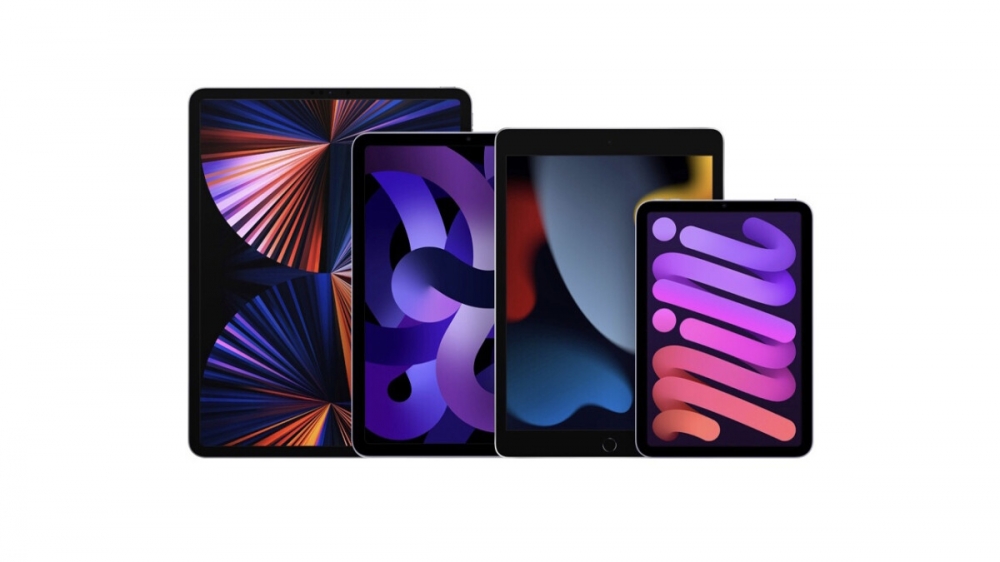The History of the Apple iPad
- Apple launched the iPad on April 3, 2010, creating a new device category.
- It had a 9.7-inch screen, iPhone OS, and pre-orders started on March 12th.
- The iPad 2 was released on March 11, 2011, with a faster CPU and thinner design.
- Despite competition from larger smartphones, the iPad remains popular for entertainment and productivity.
- It's used in classrooms, workplaces, and has a growing list of uses.
- Start reading below to learn all about the history behind Apple's iconic iPad.
Apple's iPad was launched on April 3, 2010, introducing a new category of device that was between a laptop and a smartphone. There were other tablets on the market at the time—but consumers were slow to adopt them due to lacklustre software and hardware.
Apple experimented with tablets before the iPad, with its Newton MessagePad PDAs in 1993 and the PenLite, a more powerful PowerBook-based tablet. The iPad was first developed in 2004, and it was actually scheduled to be released before the iPhone. When Apple noticed the threat of the smartphone to evergrowing iPod business, Apple changed course and decided to release the iPhone first.
Preorders for the iPad began on March 12, 2010, ahead of an April 3 release date at Apple's online and outlet stores. Initially, only Wi-Fi models were available, and 3G-capable models had to wait until April 30, and then they could only be used with AT&T in either unlimited or 250-megabyte plans.
 Image credit: Tech Point
The iPad had a 9.7-inch, 1024-by-768-pixel display, and options for 16, 32, or 64 gigabytes of storage. It extended the iPhone's multi-touch interface to a considerably larger screen, allowing it to function more like a laptop. Apple created a bespoke version of the iPhone OS for it, which let users to utilise apps and the homescreen in any position. The product also announced the launch of iBooks and the iBookstore, with the hope that consumers would want to read books, periodicals, and newspapers in the new format.
Image credit: Tech Point
The iPad had a 9.7-inch, 1024-by-768-pixel display, and options for 16, 32, or 64 gigabytes of storage. It extended the iPhone's multi-touch interface to a considerably larger screen, allowing it to function more like a laptop. Apple created a bespoke version of the iPhone OS for it, which let users to utilise apps and the homescreen in any position. The product also announced the launch of iBooks and the iBookstore, with the hope that consumers would want to read books, periodicals, and newspapers in the new format.
Critics criticized the iPad for its lack of camera, multitasking, and Flash. At the time, most of its audience was between 25 and 34 years of age. A survey by Business Insider revealed that 23 percent of respondents even had more than one iPad at home. As for whether or not they considered buying an Android tablet, the thought hadn't crossed the minds of 87 percent of them.
 Image credit: One World Rental
The iPad 2 was released on March 11, 2011, with a speedier A5 CPU, but it was most notable for enhancing Apple's design and concepts. The device was lighter and thinner than previous models, and it was the first to enable Smart Covers, with magnets that not only kept cases attached but also woke the iPad when it was opened. Other new features, such as FaceTime, were enabled by the addition of a gyroscope and front- and rear-facing cameras. The iPad 2 became Apple's tablet workhorse in many respects.
Image credit: One World Rental
The iPad 2 was released on March 11, 2011, with a speedier A5 CPU, but it was most notable for enhancing Apple's design and concepts. The device was lighter and thinner than previous models, and it was the first to enable Smart Covers, with magnets that not only kept cases attached but also woke the iPad when it was opened. Other new features, such as FaceTime, were enabled by the addition of a gyroscope and front- and rear-facing cameras. The iPad 2 became Apple's tablet workhorse in many respects.
In recent years, the iPad has battled to maintain its uniqueness in the face of larger and more capable smartphones. Despite this, the iPad remains a popular device with an ever-growing list of uses. From the classroom to the workplace, the iPad has become a device that is capable of fulfilling many different needs. Whether you are using it for entertainment or productivity, the iPad has established itself as a reliable and versatile device.
 Image credit: PhoneArena
So, what do you think of the iPad? Do you own one, one would you ever consider purchasing one? Let us know in the comments below.
Image credit: PhoneArena
So, what do you think of the iPad? Do you own one, one would you ever consider purchasing one? Let us know in the comments below.
No password required
A confirmation request will be delivered to the email address you provide. Once confirmed, your comment will be published. It's as simple as two clicks.
Your email address will not be published publicly. Additionally, we will not send you marketing emails unless you opt-in.